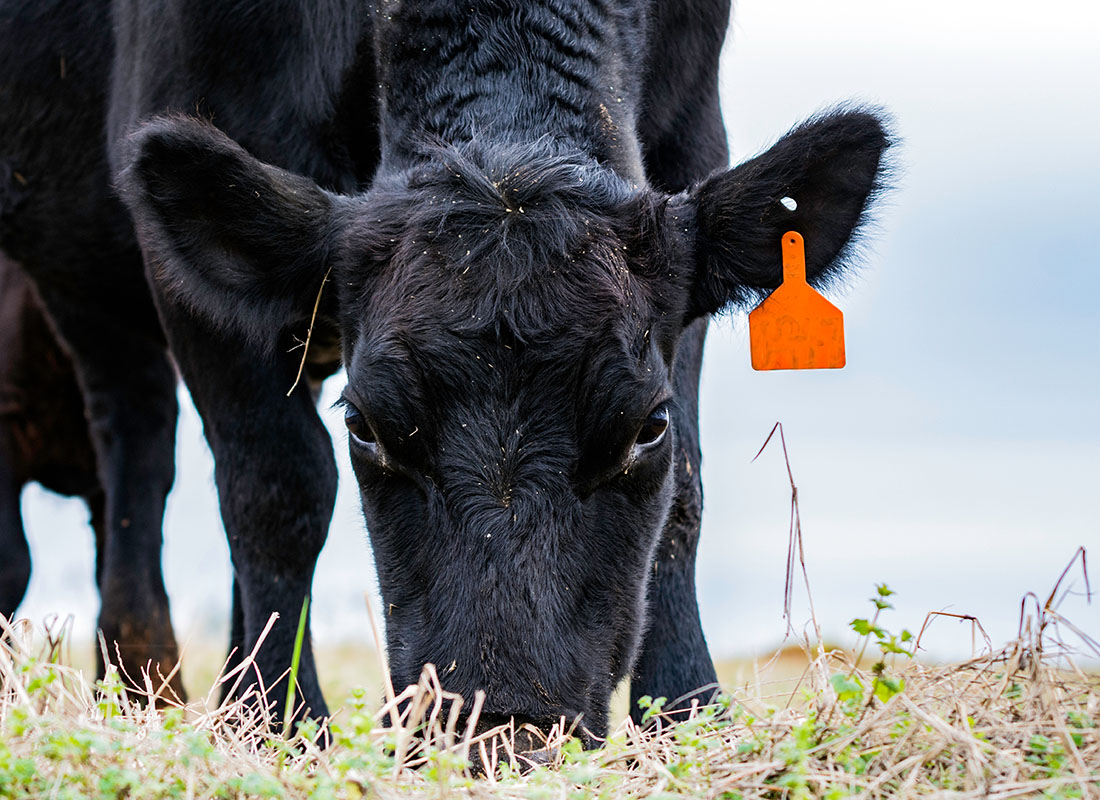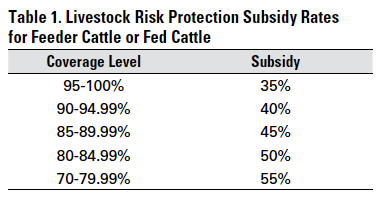Opening Growth Prospective: Bagley Risk Management Approaches
Opening Growth Prospective: Bagley Risk Management Approaches
Blog Article
Secret Factors to Take Into Consideration When Picking Animals Risk Protection (LRP) Insurance Coverage
When examining alternatives for Animals Threat Security (LRP) insurance coverage, a number of crucial aspects call for mindful factor to consider to make sure effective danger administration in the agricultural industry. Selecting the best protection options tailored to your details animals procedure is extremely important, as is recognizing just how superior expenses correlate with the level of security used. Furthermore, the eligibility criteria for various kinds of animals and the versatility of the policy to adapt to changing situations are important elements to weigh. The effectiveness and transparency of the cases process can significantly influence the general experience and financial end results for livestock manufacturers. By tactically browsing these important elements, manufacturers can secure their investments and alleviate potential risks effectively.
Insurance Coverage Options
When taking into consideration Animals Threat Protection (LRP) insurance coverage, it is necessary to comprehend the numerous coverage choices available to mitigate dangers in the farming field. Animals Risk Security (LRP) insurance coverage uses various coverage options tailored to satisfy the varied requirements of animals manufacturers. Bagley Risk Management. One of the key insurance coverage alternatives is price coverage, which safeguards against a decline in market costs. Manufacturers can choose the insurance coverage level that lines up with their rate threat monitoring objectives, allowing them to safeguard their operations versus prospective economic losses.
An additional essential coverage option is the recommendation period, which establishes the size of time the insurance coverage is in effect. Manufacturers can pick the endorsement duration that finest fits their manufacturing cycle and market conditions. Additionally, coverage levels and rates vary based upon the sort of animals being guaranteed, offering manufacturers the adaptability to customize their insurance coverage plans according to their certain requirements.
Comprehending the various coverage alternatives offered under Animals Threat Protection (LRP) insurance policy is crucial for producers to make informed choices that effectively protect their livestock procedures from market unpredictabilities.
Premium Prices

Animals Risk Defense (LRP) insurance coverage offers essential coverage options tailored to alleviate risks in the farming industry, with a considerable facet to consider being the estimation and framework of premium costs. When determining premium expenses for LRP insurance, several variables come right into play. These consist of the kind and variety of livestock being insured, the insurance coverage degree chosen, the existing market value, historical cost information, and the length of the coverage period. Insurers might also consider the place of the ranch, as geographic variables can impact the overall threat profile.
Premium expenses for LRP insurance coverage are usually calculated based upon actuarial data and risk analysis designs. Insurance providers evaluate historic information on animals prices and manufacturing expenses to determine an ideal premium that mirrors the degree of risk entailed. It is vital for animals producers to carefully examine premium costs and insurance coverage options to guarantee they are sufficiently protected against possible monetary losses as a result of unfavorable market problems or unpredicted events. By recognizing exactly how exceptional expenses are computed and structured, producers can make educated choices when choosing the appropriate LRP insurance plan for their procedure.
Qualified Animals
The decision of eligible animals for Livestock Danger Protection (LRP) insurance protection includes cautious factor to consider of certain criteria and characteristics. Animals kinds that are generally eligible for LRP insurance consist of feeder cattle, fed swine, livestock, and lambs. These pets have to satisfy certain certifications associated with weight varieties, age, and meant usage. Furthermore, the eligibility of animals might vary based on the particular insurance policy copyright and the terms of the policy.
Feeder livestock, for instance, are typically eligible for LRP protection if they fall within defined weight varieties. Fed cattle might likewise be eligible, yet they should meet particular weight and high quality grade needs. Swine eligible for coverage generally consist of her latest blog market weight animals meant for slaughter. Lambs are an additional classification of animals that can be taken into consideration for LRP insurance, with variables such as weight and age playing an important duty in determining their qualification.
Prior to selecting LRP insurance coverage for animals, producers should carefully examine the qualification criteria detailed by the insurance policy company to guarantee their pets fulfill the required demands for insurance coverage.
Policy Flexibility
Policy flexibility in Animals Danger Protection (LRP) insurance policy enables producers to customize coverage to match their certain requirements and take the chance of administration techniques. This adaptability encourages animals producers to tailor their insurance policies based on elements such as the type of animals they own, market problems, and individual danger resistance degrees. By using customizable choices, LRP insurance allows manufacturers to efficiently handle their risk exposure while guarding their livestock procedures against unanticipated market volatility.
Claims Process
Upon experiencing a loss or damages, manufacturers can initiate the insurance claims procedure for their Livestock Danger Defense (LRP) insurance by immediately calling their insurance company. It is critical for producers to report the loss as soon as feasible to speed up the cases procedure. When reaching out to the insurance coverage supplier, manufacturers will need to offer in-depth details about the incident, including the date, nature of the loss, and any relevant paperwork such as veterinary records or market value.

After the analysis is total, the insurance policy company will choose regarding the insurance claim and communicate the result to the manufacturer. The producer will certainly receive settlement according to the terms of their Animals Risk Security (LRP) insurance coverage policy if the insurance claim is accepted. It is essential for manufacturers to be knowledgeable about the claims process to make sure a smooth experience in the occasion of a loss

Conclusion
To conclude, when choosing Livestock Danger Security (LRP) insurance coverage, it is important to take anchor into consideration insurance coverage alternatives, premium expenses, qualified livestock, policy flexibility, and the claims procedure. These crucial factors will certainly aid make certain that herdsmans and farmers are appropriately shielded versus prospective risks and losses related to their animals procedures. Making a notified decision based on these factors to consider can eventually cause much better financial security and satisfaction for animals producers.
Livestock Risk Defense (LRP) insurance policy provides different insurance coverage choices tailored to fulfill the diverse needs of animals producers.The determination of qualified animals for Livestock Threat Security (LRP) insurance protection involves mindful consideration of specific standards and qualities.Plan versatility in Animals Risk Security (LRP) insurance permits producers to customize coverage to match their particular demands and run the risk of monitoring techniques.Upon experiencing a loss or damages, producers can start the claims procedure for their Animals Risk Defense (LRP) insurance by immediately contacting their insurance coverage provider.In final thought, when picking Livestock navigate here Danger Security (LRP) insurance policy, it is vital to take into consideration coverage choices, premium prices, eligible livestock, plan adaptability, and the claims procedure.
Report this page